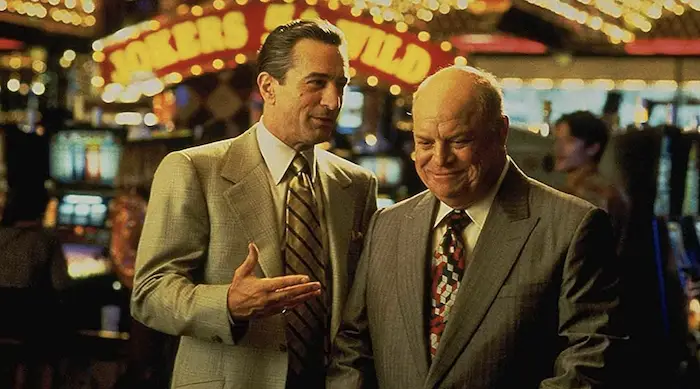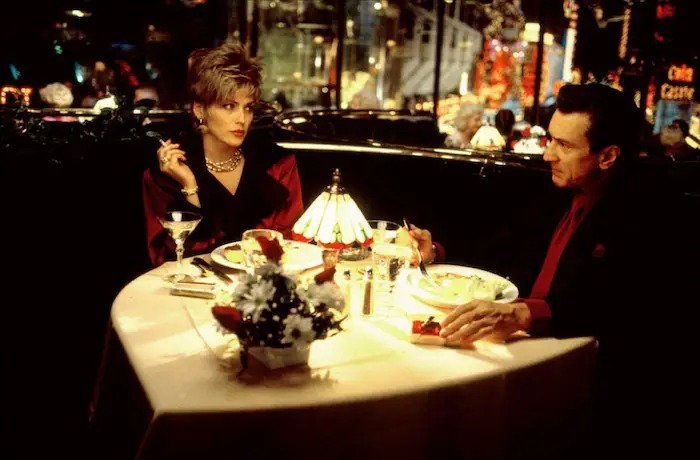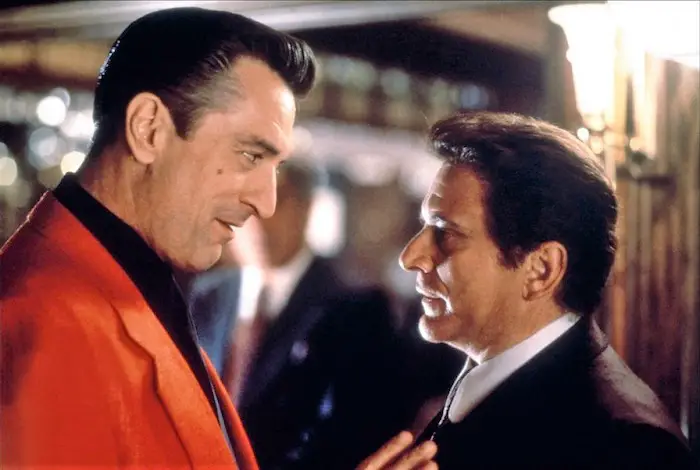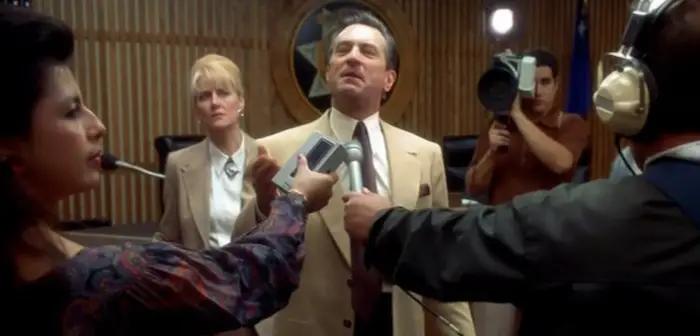
In the pantheon of names of Hollywood directors, the name of Martin Scorsese holds a special place. Throughout his career, Scorsese has created more than four dozen films, many of which are considered true masterpieces. He has made a significant contribution to the development of the crime genre with films such as ‘Mean Streets’, ‘Goodfellas’, ‘Casino’, and ‘The Departed’ – each standing as a prominent example of this genre.
Filmed in 1995, the movie ‘Casino’ is particularly noteworthy in Scorsese’s repertoire. This film was not his first venture into the gangster genre, but by this point, he had already perfected his approach to such stories. Those interested in learning more about the film will find numerous intriguing aspects to explore, not least of which is how the fictional world of the ‘Casino’ mirrors the real operations and dramatic intensity of Las Vegas gambling life. Just as engaging as a live game at a bustling casino, fans of Scorsese’s work might feel compelled to revisit the film, perhaps even prompting them to check their own Stay casino login, ready to engage with the thrill of the gamble, echoing the high stakes seen in the movie.
For those familiar with the film, here are some curious facts that highlight the depth of its creation and the meticulous detail Scorsese poured into every frame, ensuring that ‘Casino’ not only captured the essence of its era but also set a benchmark in cinematic achievement within the gangster genre.

Fact #1
The costumes for the film cost over a million dollars. Sharon Stone for example appears in the film in forty different costumes, and Robert De Niro as much as seventy. Both after filming these suits presented.
Fact #2
Scorsese filmed the scene with a vise in which the head of one poor man is twisted to circumvent censorship. When assigning the rating, all attention was focused on it and the rest of the scenes were not touched. However, Scorsese defended the ‘vise’ by slightly editing the scene.
Fact #3
The film is based on the book by journalist Nicholas Pileggi ‘Casino: Love and Fame in Las Vegas. Pileggi co-wrote the screenplay for the film with Scorsese. Prior to that, Scorsese and Pileggi worked together on the film ‘Goodfellas’.
Fact #4
Despite the claim: ‘the story is based on real events’, the film is set in a fictional casino ‘Tangier’. The real name of the casino – ‘Stardust’, Scorsese brings to the viewer through repeatedly sounding the song of the same name.
Fact #5
The characters of De Niro, Joe Pesci and Sharon Stone have real-life prototypes. And Joe Pesci, according to Pileggi, was so similar to his prototype, Anthony Spilotro, that the first time he appeared, he shocked Spilotro’s acquaintances who were present on the set.

Fact #6
For consulting, Scorsese brought in criminals and retired FBI agents. According to the producers, the most difficult thing was to find people who would understetetetelnye schemes of fraud in the casino.
Fact #7
For the role of Ginger (Sharon Stone’s character) considered such stars as Michelle Pfeiffer, Uma Thurman, Nicole Kidman, Madonna, Rene Russo, Melanie Griffith and others. But, Sharon Stone was quite persistent and the role went to her.
Fact #8
Most of the phrases James Woods sounded in the film was unprepared impromptu. Woods also took a very active part in working out his scenes.
Fact #9
Lawyer Oscar Goodman (by the way, in the film he plays himself) defending various criminal authorities later became mayor of Las Vegas.
Fact #10
During filming Sharon Stone suffered tremendously from back pain. The actress had an old spinal injury, and some of her clothes weighed more than twenty kilograms.

Fact #11
One of the most commendable aspects of ‘Casino‘ is its meticulous attention to detail, ensuring the authenticity of the casino environment. The production team went to great lengths to replicate the look and feel of a real Las Vegas casino. They even used actual gaming chips from the era depicted in the film, sourced directly from casinos of the time. The sets were constructed in a closed-down casino that was refurbished specifically for the shoot, providing a highly authentic backdrop that added to the film’s gritty realism.
Fact #12
While the film boasts of its fictional elements, much of the narrative was influenced by actual events and characters associated with the Las Vegas underworld in the 1970s and 1980s. Scorsese and Pileggi incorporated these elements to enhance the plot’s authenticity. Interviews with former casino employees, law enforcement officers, and individuals associated with the mob provided deeper insights, which helped in shaping a more accurate portrayal of the operations and personal dynamics within the casinos of that era.
Fact #13
Upon its release, ‘Casino‘ received a polarized response from critics. While some praised its ambitious scope and Scorsese’s directorial prowess, others found it overly violent and similar to his previous work, particularly ‘Goodfellas‘. However, over the years, the film has gained a considerable following and is now regarded as a classic, particularly noted for its detailed depiction of the casino operations and the complex interplay between its main characters. It has also been lauded for its significant contributions to the gangster genre and is frequently cited in discussions about films that best represent Las Vegas’s dark side.
Fact #14
‘Casino‘ marked a significant point in the careers of its lead actors. For Sharon Stone, her role as Ginger earned her a Golden Globe award and an Academy Award nomination, which significantly boosted her status in Hollywood. Similarly, the film reaffirmed Robert De Niro and Joe Pesci’s positions as formidable actors in demanding roles. For Scorsese, ‘Casino‘ solidified his reputation for crafting intricate narratives about crime and morality, a theme prevalent throughout his oeuvre. The film’s success also cemented the Scorsese-Pileggi collaboration as one of the most successful partnerships in modern cinema.
Fact #15
Filming ‘Casino‘ was not without its challenges. Due to the sensitive nature of the content, especially with its real-life connections to organized crime, there were concerns about the portrayal of certain characters and events. Moreover, the logistics of shooting in a busy city like Las Vegas, combined with the intricate set designs and the need for historical accuracy, posed significant hurdles. Despite these challenges, the dedication to authenticity never wavered, ultimately contributing to the film’s gritty and realistic portrayal of its subject matter.

Conclusion
Martin Scorsese’s ‘Casino‘ not only showcases the director’s prowess in delving deep into the complexities of crime and morality but also solidifies its place as a cultural artifact that offers a gritty, realistic glimpse into the functioning of the mob-controlled casino operations of Las Vegas. The film, rich in narrative depth and historical detail, transcends its initial mixed reviews to become a classic, celebrated for its authentic portrayal and the dynamic performances of its lead actors.
‘Casino‘ represents a significant chapter in the evolution of the gangster genre, blending historical facts with cinematic elements to craft a story that is both engaging and educational. The film’s meticulous attention to detail, from costume design to set construction, and its commitment to authenticity, from consulting actual criminals to incorporating true events, demonstrates Scorsese’s dedication to storytelling. This commitment not only enriched the film’s content but also provided a template for future filmmakers on how to weave fact with fiction effectively.
Moreover, ‘Casino‘ has contributed significantly to the discourse around the portrayal of organized crime in media, offering insights into the personal and operational dynamics of the mafia. The film’s legacy continues to influence both cinema and popular culture, reminding viewers of the power of meticulous craftsmanship and passionate storytelling in filmmaking. As we look back on Scorsese’s illustrious career, ‘Casino‘ stands out as a testament to his ability to capture the essence of American crime and punishment in a way that is both compelling and thought-provoking.
